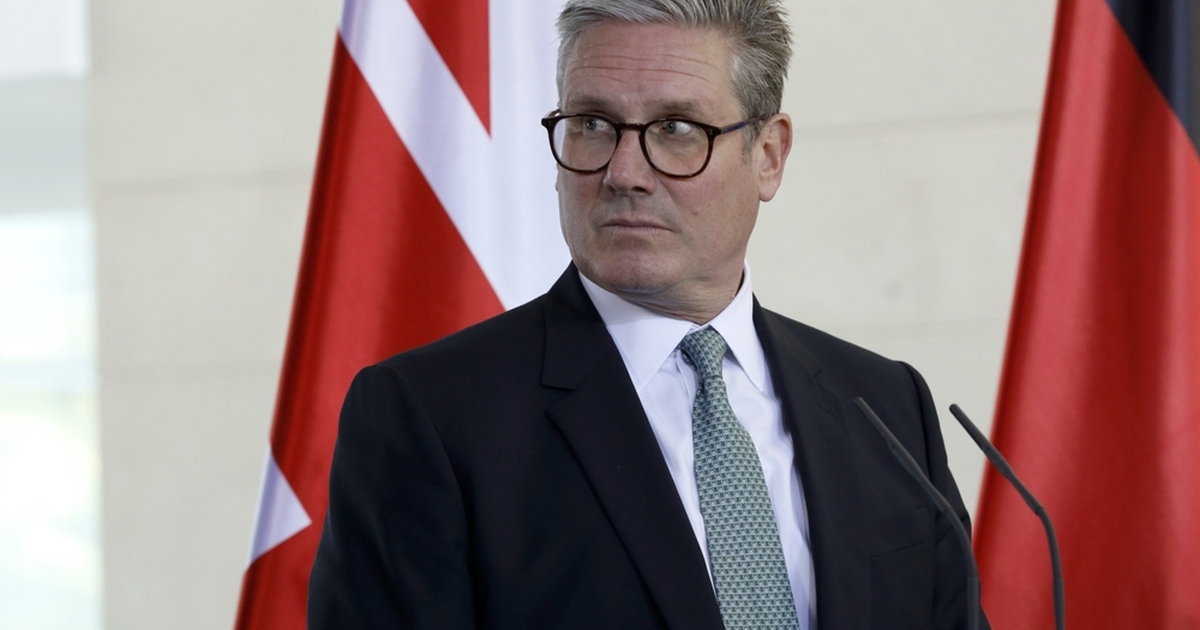Two years ago, Nahid Islam graduated from Dhaka University with a bachelor thesis that examined why no student movement in Bangladesh had ever managed to reach its goals. Little does it matter that he forgot what his conclusion was. The 26-year-old has now changed history.
Islam was one of the most visible faces of a student movement which kickstarted countrywide mass protests in Bangladesh in recent months, resulting in the ousting of Prime Minister Sheikh Hasina, once considered to be among the most powerful women in the world.
“Hasina is a bloodsucker and a psychopath,” Islam told TIME with a calm voice from an opulent black leather chair in his wood-paneled office at the Ministry for Information Technology in Dhaka, on a Sunday afternoon in September.
Not long ago, he was an information technology tutor, forced into hiding in order to avoid being arrested by the government. Now he is the country’s ICT and media minister.
In June, together with a handful of other students, Islam walked into the library at Dhaka University, holding up placards calling on people to take to the streets. The High Court had just reinstated a controversial quota that favored family members of veterans from Bangladesh’s 1971 Liberation War to get government jobs. Islam and his colleagues demanded a fair chance for everyone instead.
Protests against the quota system first rattled university campuses across Bangladesh in 2018. At the time, the government eventually backtracked and the protests died down. This year too, it could have ended with the issue of the quota system, Islam said.
But then security forces began shooting live rounds at protesters. On July 16, Abu Sayed, another student leader, was shot dead while walking towards police officers with open arms.
“His killing turned out to be a game-changing moment for the movement,” said Islam. The protests quickly swept up large parts of the population across the country, offering people a welcome outlet for mounting frustration in the face of a corrupt government, soaring prices, and an increasingly authoritarian rule.
Eventually the protesters focused on Prime Minister Hasina herself. When the students came up with a one-point demand on August 3, it was Islam who delivered it: Hasina needs to resign, he announced on the campus of Dhaka University. On August 5, when hundreds of thousands were closing in on her residence in the heart of Dhaka, she boarded a helicopter and was flown to India, where she remains in exile.
“No one thought she could be toppled,” Islam said, rocking back and forth in his big leather chair.
Read More: Sheikh Hasina and the Future of Democracy in Bangladesh
With the military’s support, the students—all of the sudden in charge of a country of 170 million—asked Nobel Peace Laureate Muhammad Yunus, 84, to preside over an interim government. The economist, who rose to fame when he revolutionized the development industry with his microcredit idea, was in exile himself due to an array of legal charges levied against him by the Hasina government. He’s been acquitted since taking office.
As the head of the interim government, Yunus is Islam’s boss now—but only because the students wanted it this way. When asked who was taking orders from whom, Islam smirks before saying: “Yunus consults us on all major decisions.”
He points at a red landline on his desk at the ministry. “The VIP phone,” Islam said and shrugged. “No idea what I should use it for. I text Yunus on Whatsapp.”
If Islam is still puzzled about everything that has happened in his life over the past couple of weeks, his stoic demeanor does not give it away.
His personal secretary, a seemingly stressed officer older than himself, keeps rushing in and out of the room, carrying documents for him to sign. Islam’s two mobile phones are ringing constantly. And visitors show up until the early morning hours at his residence in an uncharacteristically lush area of Dhaka, where the living room alone—adorned with a chandelier and white velvet sofas—is almost as big as his old apartment.
The sociology graduate has always been among those who defied the government. In his first week of university in 2017, the Dhaka-born son of a teacher took part in protests against a coal plant on the edge of the Sundarbans, a mangrove forest on the border with India. In 2019, Islam ran for campus elections and later, along with his peers, formed a student organization at Dhaka University, the Democratic Student Force.
But he first became known to the larger public in July of this year, after he was kidnapped and tortured by the country’s intelligence services, notorious for its enforced disappearances of government critics. One sweltering night, around 30 plainclothes officers showed up at a friend’s house where he was hiding to avoid arrest for his role in the protests. He says they put black cloth on his head, then they told him: “the world will never see you again.”
In what Islam believes was one of their secret prisons, they beat him with what he says felt like an iron rod, leaving bruises on his arms and legs. Dizzy from a combination of the pain, tormenting sounds, and a glistening bright light directed at him, he drifted in and out of consciousness.
“Who’s the mastermind? Where is the money coming from?” they wanted to know, he recalled. A day later, Islam says he was dumped beside a bridge. Photos of his injuries were circulated by local media and caused outrage.
“The intelligence services were looking for known faces, for the leader of our movement, but we didn’t have just one. That was our main strength,” he said. And while he seems to be navigating his new role as a minister with confidence, he insists that leading the protests was teamwork: “The media always want one face, but I am not the only leader in this movement. There were many of us.”

After Hasina’s government was ousted, the power vacuum had to be filled quickly. Dr Samina Luthfa, Islam’s sociology professor from Dhaka University, says she met an uncharacteristically nervous Islam on the day the students announced the interim government to the people. “He’s very young, it was a huge responsibility.”
In the aftermath of the overhaul, people’s expectations projected onto the interim government are skyrocketing. In this new Bangladesh, everybody anticipates only the best from the students who guided them in the liberation from a “dictator,” as many now dare to say openly.
Read More: The Trials of Muhammad Yunus
His phone is ringing, again. He is being asked to mediate at a Dhaka hospital, where students attacked doctors after one of their peers died from alleged neglect. The doctors responded with a strike. While he is gulping down his rice and chicken lunch, another call. Can Yunus’ office share his number with some protesters who demand government jobs?
“It’s odd,” Islam said, “once this was us,” he says, referring to the protesters. “Now we’re the ones who have to manage it.”
Bangladeshis are energized by the success of making their voices heard after a 15-year rule that was sustained by vote rigging, crackdowns on critics, and a general climate of fear. People are now making use of their new freedom. Women stage demonstrations against harassment cases. Students oppose exams they want to see postponed after weeks of interrupted classes. Even school children in upper-class parts of Dhaka were seen protesting—they didn’t like their principal, they said.
“Over the last 15 years people couldn’t talk, now they finally get a chance,” Islam explained.
But his biggest challenge might still lie ahead.
While there is a general sense of relief in the country, there’s not been much time to celebrate. Restoring law and order remains a concern for the new government. And there’s also a lingering fear that the military or the ousted Awami League could try to forcibly take back power. It would not be the first time, as in Bangladesh, politics have traditionally been marred by violence.
Islam says that it is the job of the interim government to root out corruption and bring the country back onto a path of democracy until elections are held. “We will only be here for a short time.”
“All the corruption and the violence – people don’t want this anymore,” he said. “We should understand the pulse of the new generation. We need to move on.”
















































































































































You must be logged in to post a comment Login